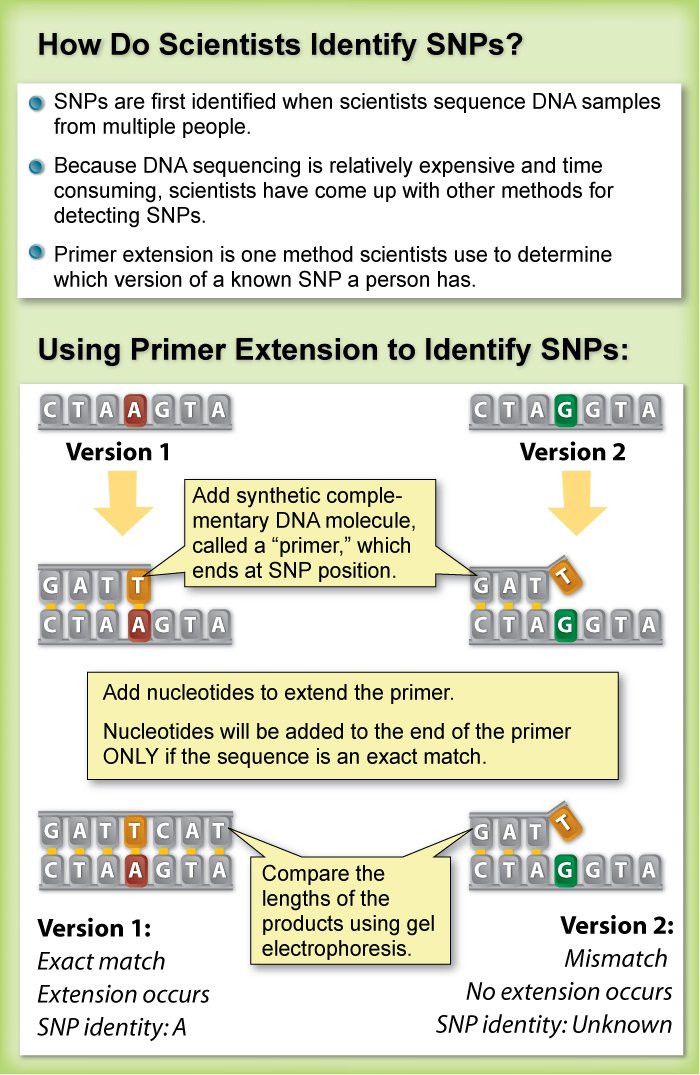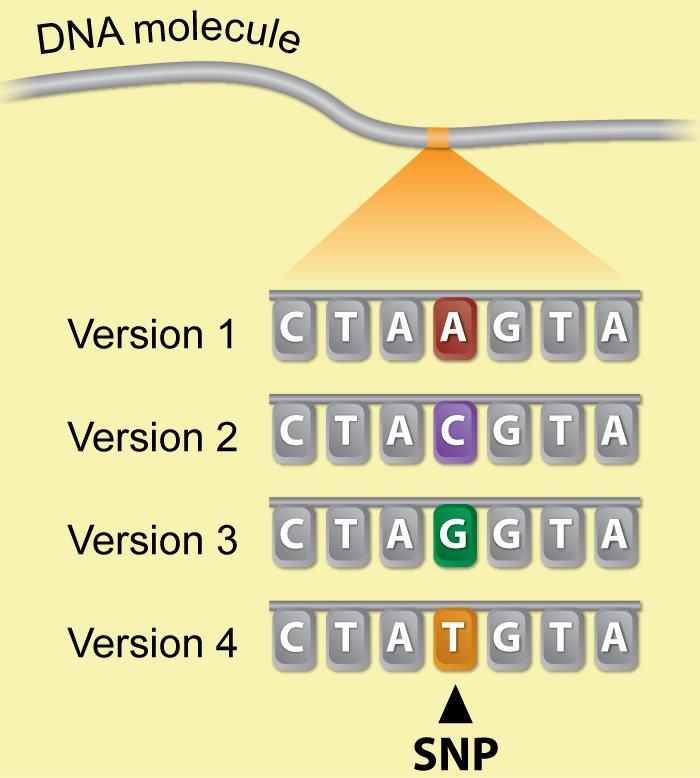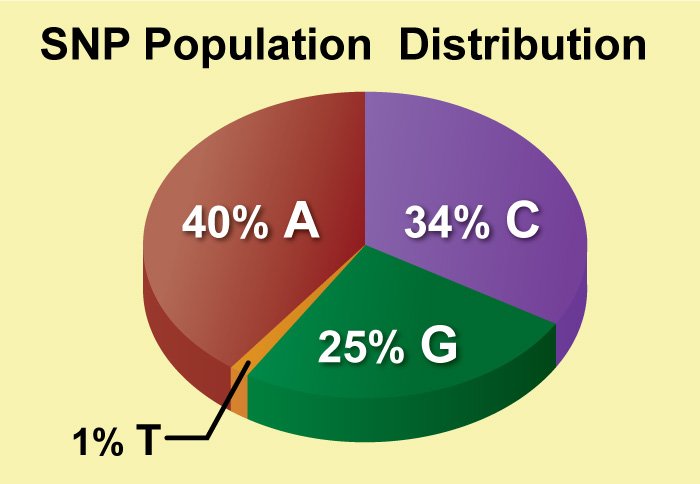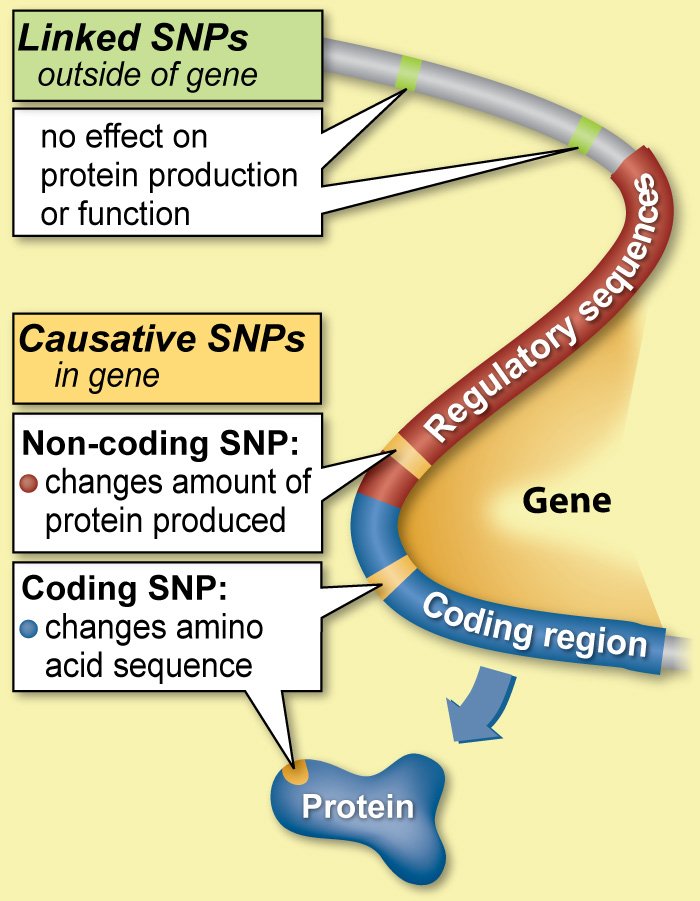Scientists are identifying, cataloging, and studying small genetic variations among humans that will lead to more specialized and effective medical treatments. What do these variations look like, and what exactly makes them informative?
Researchers look for one or more single nucleotide polymorphisms (SNPs; pronounced "snips"). SNPs are single-nucleotide substitutions of one base for another that occur in more than one percent of the general population.
The challenge for scientists is to identify SNPs that correlate with a particular effect in patients. Reliable SNPs could serve as predictive markers that inform our decisions about numerous aspects of medical care, including specific diseases, effectiveness of various drugs and adverse reactions to specific drugs.
This pharmacogenetic approach could save time, money, and discomfort for millions of patients through accurate diagnoses and matching patients with appropriate medicines.



